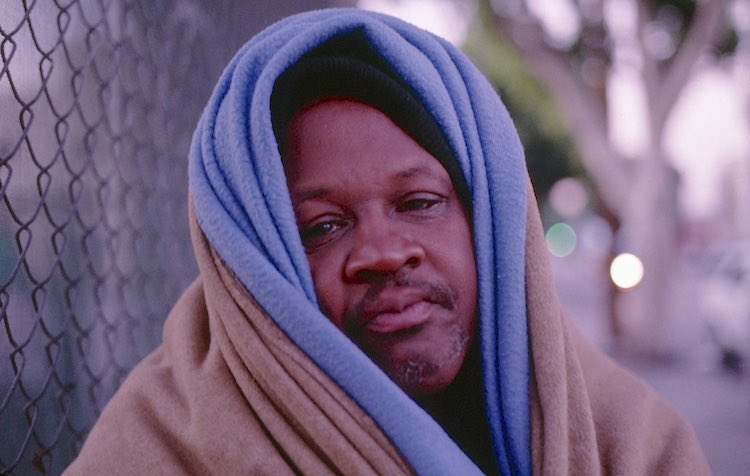While estimates vary, experts place the number of homeless in the United States somewhere near 550,000; a number that is tough to calculate because there tend to be the more permanently homeless – those who we see on the streets or living in the woods – and those who can be seen as transitionally or temporarily homeless: they’ve lost housing until a new job kicks in, or they’re moving from one neighbor or relative to another.
In any case, these people will soon have to make it through the cold, snow, and sleet that will arrive with the upcoming winter months.
I have been serving the homeless for ten years. During that time, I’ve seen the toll that the chill of winter takes on every single one of these people. I’m often asked “what can I do to help?” by people who are moved by these stories of homelessness.
It’s a complicated problem, with no one-size fits all solution – but there are ways you can start helping the homeless this winter, right in your own community. Here are a few tips to get you started:
1. Learn About Local Organizations Addressing Hunger. Simply Googling “homelessness” in your area can lead you to government and nonprofit organizations addressing the problem. In most instances, volunteers are warmly welcomed. It’s a great way to see specifically what these groups do and which ones are a good match for the skills that you bring to the table. Do you want to help by bringing meals and serving at a shelter? Can you give someone a ride to a healthcare provider? Do you have clothes or other items to donate that can be particularly useful during the winter? See what the needs are, and where you can step in, and then get started.
RELATED: Photos of 75-Year-Old Volunteer Napping With Cats Hauls in Funds to Run Sanctuary for a Year
2. Bring the Homelessness Issue to the Attention of your Place of Worship. Often government agencies and nonprofits don’t have the resources to address all aspects of homelessness. They need help and I’ve seen the meaningful contributions that faith-based groups can make. Most believers are inclined to help when told how. Sometimes, they figure it out on their own. I’m often asked things like “can you use some clothes, some food, some bus tokens?” People want to get involved. In addition to ongoing programs, our church started giving propane tanks (the kind you use for charcoal grills) to those living in the woods to provide heat and gas for cooking.
3. Be Prepared to Speak with Homeless People. If you have the opportunity to serve at a shelter, for example, introduce yourself and engage in a conversation with someone who’s homeless. Often, it’s one event – losing a job, prolonged illness, divorce, or some combination that begins the downward spiral to homelessness. It’s so important to them to be seen as an individual; to be accorded respect. It doesn’t have to be anything deep; take your cue from them. Sometimes, you can help by being nothing more than a good listener. Similarly, finding someone outside of a fast food restaurant asking for some money might give you the opportunity to provide them with an extra dimension of warmth during the cold and buy them a meal to show them some kindness. Some situations might be intimidating; use your common sense, but know too that sometimes if we’re going to make a difference, we’ve got to venture outside our comfort zone.
4. Stay Abreast of What the Government is Doing to Help the Homeless. Federal, state, and local governments budget for social services for those in need with your taxes – and you elect the officials who determine where budget money goes. Keep informed and let them know you’re concerned about programs for the homeless receiving the resources needed.
LOOK: When School Places Ad For Male Mentors, They’re Overwhelmed by ‘Volunteer Dad’ Responses
5. Recognize that The Problem Won’t be Solved Overnight. Working with the homeless and extending kindness to help those not as fortunate can be a rewarding experience. However, it can be frustrating as well. Longstanding problems, including substance abuse, emotional issues, and criminal records are not uncommon among the homeless. But as I mentioned earlier, there is not a one-size-fits-all solution to helping the homeless. Some are very appreciative of the support they receive, others not so much so. Some really want to extricate themselves from the woods and streets, while others may not be as committed. There’s not one person or one group that is going to end homelessness. It’s going to take a lot of us, each doing what we can, committed to the long haul.
So, if you encounter those in need, before passing by and thinking someone else must be taking care of the problem, recognize that this might not be the case. Take that first step, see if there is a need going unfulfilled, and see what you can do. Even if there is a dedicated person who is helping out, I know they would welcome your support.
For the last six of those years, Rich Garon served as Chief-of-Staff for the Committee on International Relations, U.S. House of Representatives. He is a member of the Serve (Outreach and Mission) Committee in Woodbridge, Virginia and he coordinates the homeless ministry, with an emphasis on those living in the woods. All proceeds from the sale of Garon’s new novel, “Lee Fitts”, released in February 2019, will go to the Bill Mehr Drop-In Center for the homeless in his local community.
Get Engaged: Be Sure And Share These Tips With Your Friends By Sharing To Social Media – Photo by Gilbert Mercier, CC




















